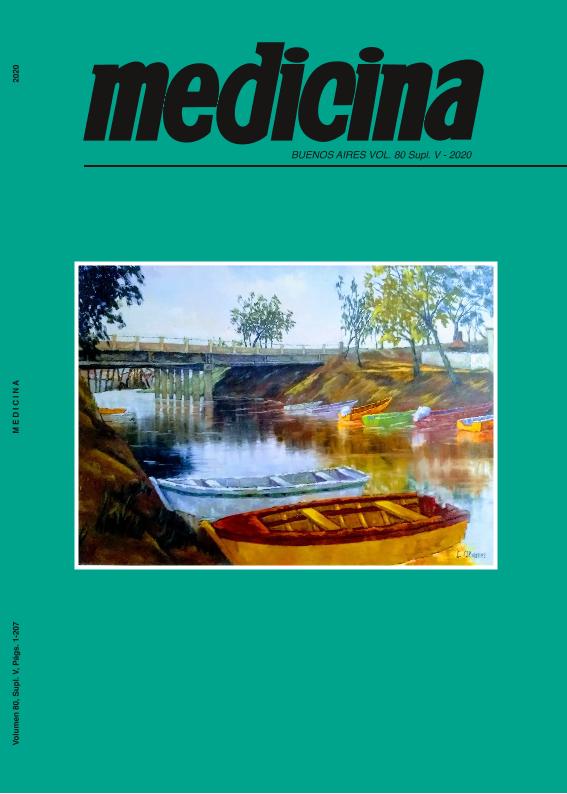Evento
Assessment of jawbone microarchitecture in bisphpsphonate-treated sheep by cone-beam computed tomography
Avendaño, María Eugenia ; Poletto, Adriana; Davison, Mario Ricardo; Bonanno, Marina Soledad
; Poletto, Adriana; Davison, Mario Ricardo; Bonanno, Marina Soledad ; Zeni, Susana Noemi
; Zeni, Susana Noemi
 ; Poletto, Adriana; Davison, Mario Ricardo; Bonanno, Marina Soledad
; Poletto, Adriana; Davison, Mario Ricardo; Bonanno, Marina Soledad ; Zeni, Susana Noemi
; Zeni, Susana Noemi
Tipo del evento:
Reunión
Nombre del evento:
LXV Reunión Anual de la Sociedad Argentina de Investigación Clínica; LXVIII Reunión Anual de la Sociedad Argentina de Inmunología; y Reunión Anual de la Sociedad Argentina Fisiología
Fecha del evento:
10/11/2020
Institución Organizadora:
Sociedad Argentina de Investigación Clínica;
Sociedad Argentina de Inmunología;
Sociedad Argentina De Fisiología;
Título de la revista:
Medicina (Buenos Aires)
Editorial:
Fundación Revista Medicina
ISSN:
0025-7680
Idioma:
Inglés
Clasificación temática:
Resumen
The cone-beam computed tomography (CBCT) is a non-invasive 3D reconstruction technique that enables to assess jawbone micro-architecture. It is used to illustrate results through 3D images. In the present report, the combination of CBCT with other techniques was used to evaluate changes in composition and micro-architectural structure quantity of the ewe jawbone after oestrogen withdrawal (OVX) and/or chronic treatment with high doses of zoledronic acid (zol). Three groups of adult Corriedale ewes, 35 to 40 kg body weight were used: OVX: OVX ewes receiving saline solution; ZOL: OVX ewes treated with Zol (4 mg/month) for 28 months for high cumulative dose of ZOL in bones and SHAM: SHAM ewes receiving saline solution (control). At the end of the study, hemi-mandibles were extracted: Bone mineral density (BMD) and content (BMC) of the mandibles were evaluated ex vivo by DXA (Lunar DPX); CBCT was performed using Planmeca Promax 3D Classic. Results of CBCT: OVX as compared to SHAM ewes significantly decreased BMC and BMD (p<0.001); BV/ TV (%), Tb. Th, connectivity and anisotropy (p<0.0075; p<0.0075, p<0.001 and p<0.02, respectively) while Tb. Sp (p<0.0002) was significantly increased. Zol treatment did not show statistical differences when compared to SHAM group. Zol showed values of anisotropy significantly higher than OVX group (p<0.018) and Tb.Sp significantly lower than OVX groups (p<0.043). BV/ TV (%), Tb. Th and connectivity as compared to OVX group showed a clear tendency to be higher and almost reached significance (p=0.055; p=0.061 and p=0.054, respectively. Maxillary BMC and BMD were lowest in OVX ewes (p<0.05) and were significantly higher in ZOL than in SHAM ewes (p<0.05). Conclusion: The CBCT technique was useful to evaluate the deterioration of the bone quality by estrogen withdrawal and the recovery by ZOL treatment.
Palabras clave:
JAW BONE
,
CBCT TECHNIQUE
,
ESTROGEN
,
BISPHOSPHONATES
Archivos asociados
Licencia
Identificadores
Colecciones
Eventos(INIGEM)
Eventos de INSTITUTO DE INMUNOLOGIA, GENETICA Y METABOLISMO
Eventos de INSTITUTO DE INMUNOLOGIA, GENETICA Y METABOLISMO
Citación
Assessment of jawbone microarchitecture in bisphpsphonate-treated sheep by cone-beam computed tomography; LXV Reunión Anual de la Sociedad Argentina de Investigación Clínica; LXVIII Reunión Anual de la Sociedad Argentina de Inmunología; y Reunión Anual de la Sociedad Argentina Fisiología; Mar del Plata; Argentina; 2020; 1-6
Compartir



